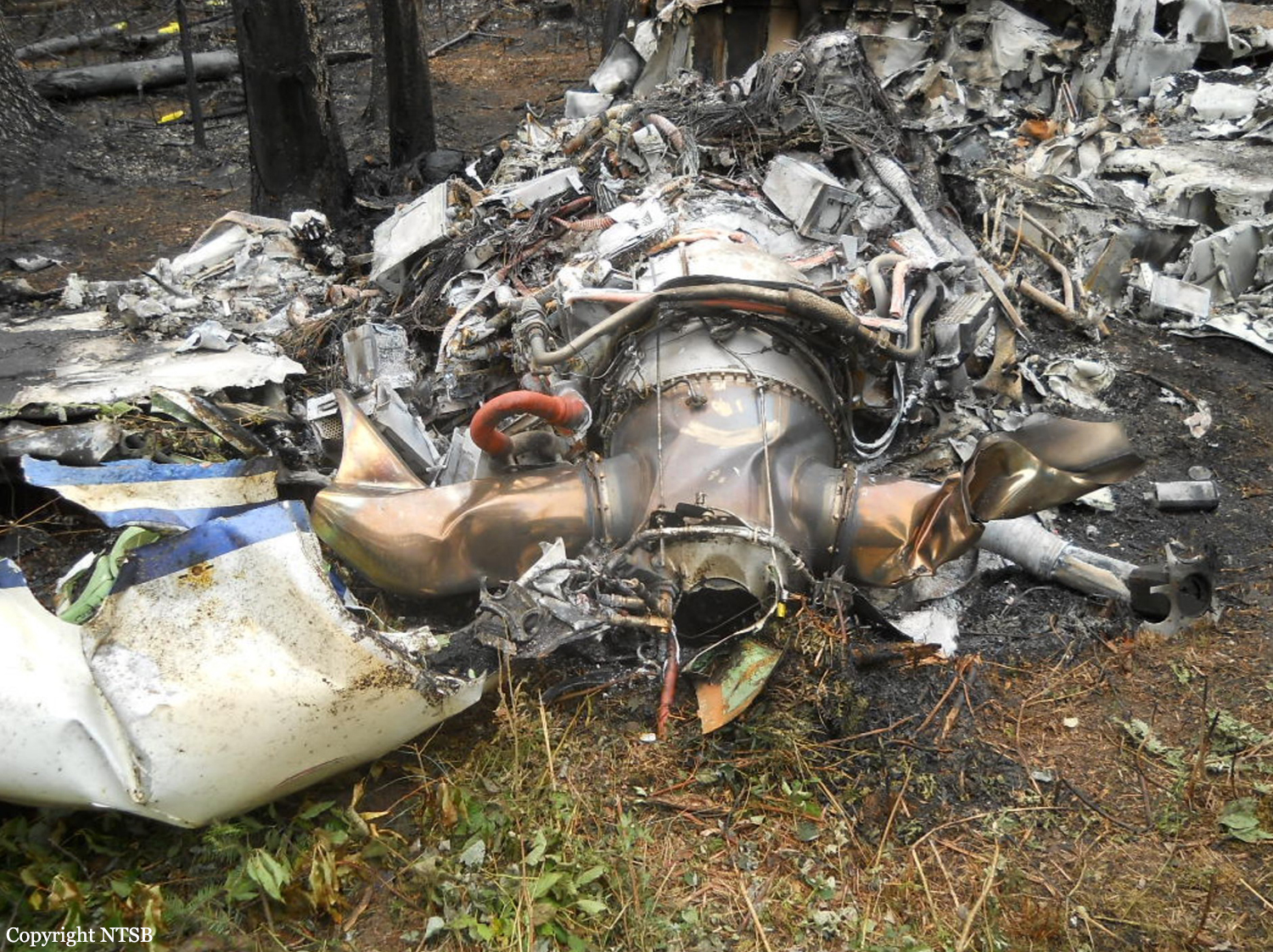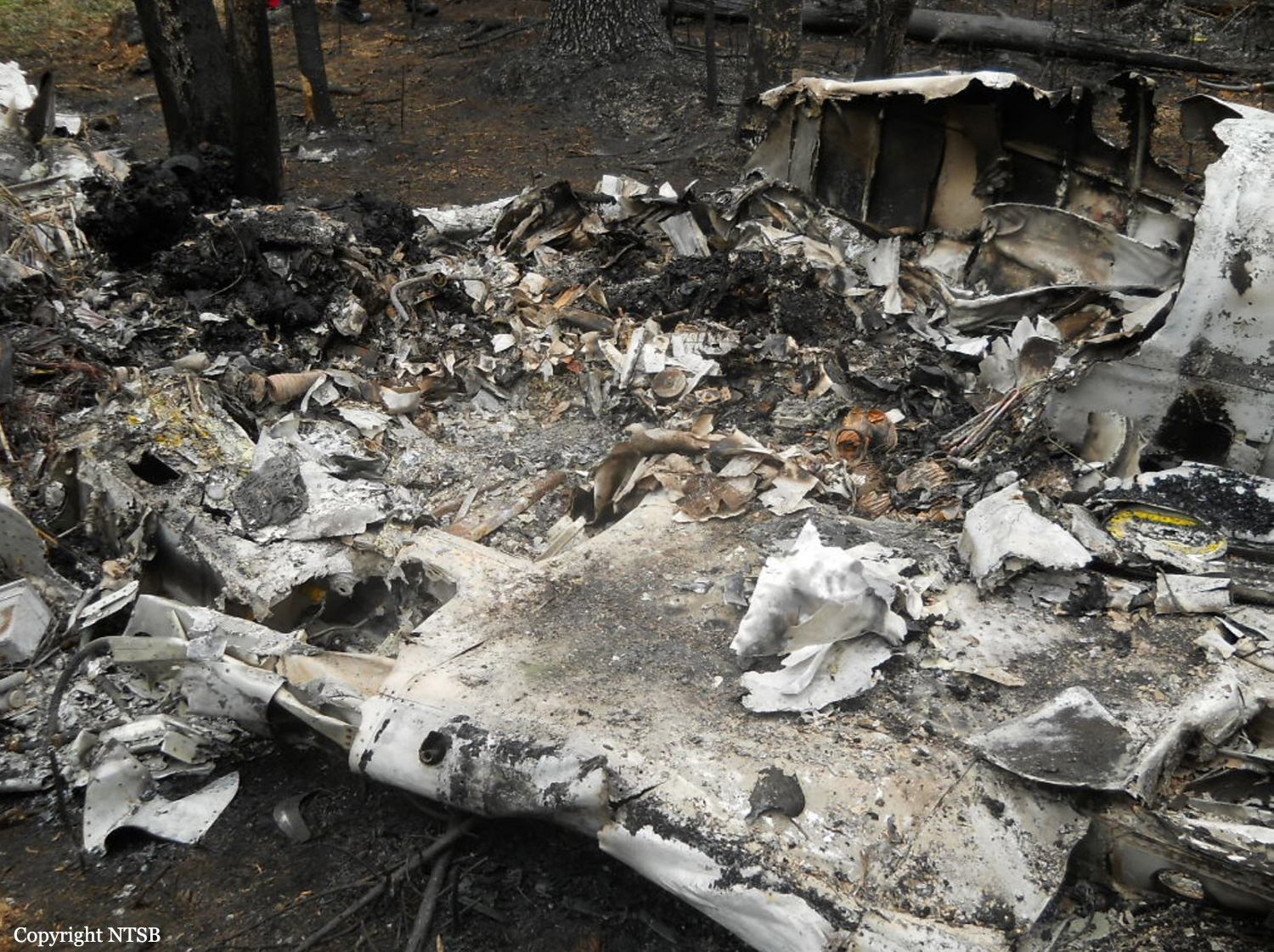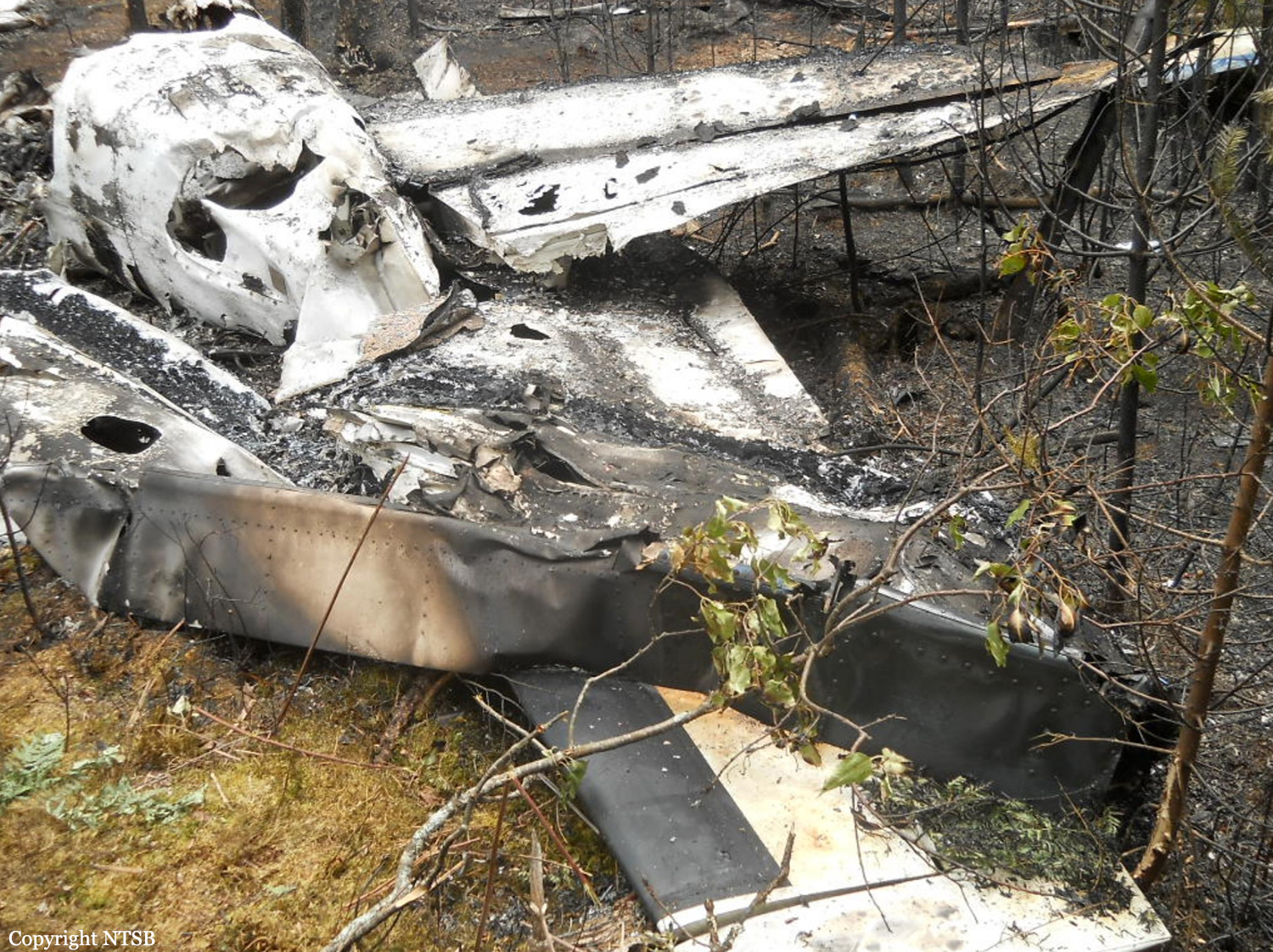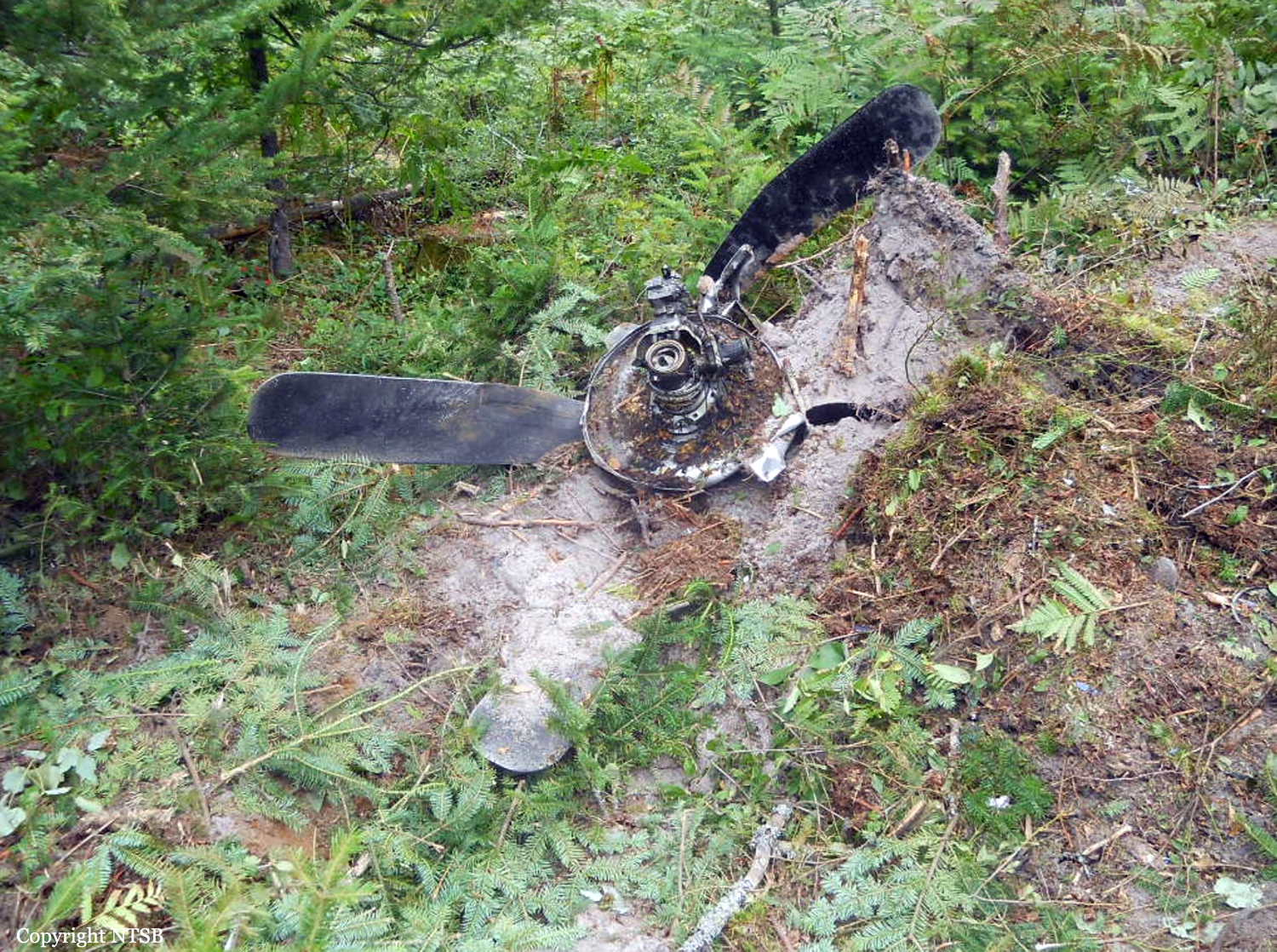Country
Crash of a Piper PA-46-310P Malibu in Chariton: 1 killed
Date & Time:
Sep 7, 2016 at 1219 LT
Registration:
N465JM
Survivors:
No
Schedule:
Olathe - Ankeny
MSN:
46-8408042
YOM:
1984
Crew on board:
1
Crew fatalities:
Pax on board:
0
Pax fatalities:
Other fatalities:
Total fatalities:
1
Captain / Total hours on type:
118.00
Circumstances:
The noninstrument-rated private pilot was conducting a visual flight rules (VFR) cross-country flight while receiving VFR flight following services from air traffic control. Radar data and voice
communication information indicated that the airplane was in cruise flight as the pilot deviated around convective weather near his destination. The controller issued a weather advisory to the pilot concerning areas of moderate to extreme precipitation along his route; the pilot responded that he saw the weather on the airplane's NEXRAD weather display system and planned to deviate around it before resuming course. About 3 minutes later, the pilot stated that he was around the weather and requested to start his descent direct toward his destination. The controller advised the pilot to descend at his discretion. Radar showed the airplane in a descending right turn before radar contact was lost at 2,900 ft mean sea level. There were no eyewitnesses, and search personnel reported rain and thunderstorms in the area about the time of the accident. The distribution of the wreckage was consistent with an in-flight breakup. Examination of the airframe revealed overload failures of the empennage and wings. No pre-impact airframe structural anomalies were found, and the propeller showed evidence of rotation at the time of impact. Further, there was no evidence of pilot impairment or incapacitation. Review of weather information indicated that the pilot most likely encountered instrument meteorological conditions as the airplane descended during the last several minutes of flight. During this time, it is likely that the pilot became disoriented while attempting to maneuver in convective, restricted visibility conditions, and lost control of the airplane. The transition from visual to instrument flight conditions would have been conducive to the development of spatial disorientation; the turning descent before the loss of radar contact and the in-flight breakup are also consistent with a loss of control due to spatial disorientation.
communication information indicated that the airplane was in cruise flight as the pilot deviated around convective weather near his destination. The controller issued a weather advisory to the pilot concerning areas of moderate to extreme precipitation along his route; the pilot responded that he saw the weather on the airplane's NEXRAD weather display system and planned to deviate around it before resuming course. About 3 minutes later, the pilot stated that he was around the weather and requested to start his descent direct toward his destination. The controller advised the pilot to descend at his discretion. Radar showed the airplane in a descending right turn before radar contact was lost at 2,900 ft mean sea level. There were no eyewitnesses, and search personnel reported rain and thunderstorms in the area about the time of the accident. The distribution of the wreckage was consistent with an in-flight breakup. Examination of the airframe revealed overload failures of the empennage and wings. No pre-impact airframe structural anomalies were found, and the propeller showed evidence of rotation at the time of impact. Further, there was no evidence of pilot impairment or incapacitation. Review of weather information indicated that the pilot most likely encountered instrument meteorological conditions as the airplane descended during the last several minutes of flight. During this time, it is likely that the pilot became disoriented while attempting to maneuver in convective, restricted visibility conditions, and lost control of the airplane. The transition from visual to instrument flight conditions would have been conducive to the development of spatial disorientation; the turning descent before the loss of radar contact and the in-flight breakup are also consistent with a loss of control due to spatial disorientation.
Probable cause:
The non-instrument-rated pilot's loss of control due to spatial disorientation in instrument meteorological conditions, which resulted in an exceedance of the airplane's design stress limitations and a subsequent in-flight breakup. Contributing to the accident was the pilot's decision to continue visual flight into convective instrument meteorological conditions.
Final Report:


Crash of a Piper PA-46-350P Malibu Mirage in Ottawa
Date & Time:
Jan 19, 2016 at 1250 LT
Registration:
N113WB
Survivors:
Yes
Schedule:
Olathe - Olathe
MSN:
46-22193
YOM:
1995
Crew on board:
2
Crew fatalities:
Pax on board:
0
Pax fatalities:
Other fatalities:
Total fatalities:
0
Captain / Total hours on type:
290.00
Copilot / Total hours on type:
800
Aircraft flight hours:
3100
Circumstances:
According to the flight instructor, he and the pilot rated student receiving instruction were operating under instrument flight rules in instrument meteorological conditions. He reported that throughout the flight the airplane accumulated light rime ice. He recalled that after holding at a Very High Frequency Omni-Directional Range (VOR), they completed a VOR approach, executed the missed approach procedure, set the power to climb at the airspeed of 130 knots indicated airspeed and began to climb to 5000 feet. He reported that as they climbed they encountered freezing rain, the airspeed began to deteriorate and the degree of ice accumulation increased from light to moderate. He reported that all of the airplane's de-ice systems were functioning yet he was not able to maintain altitude. He determined that landing at the destination airport was not an option and executed a forced landing in an open field. He affirmed that during the landing the airplane bounced several times before coming to a stop. The airplane sustained substantial damage to the firewall, forward pressure bulkhead and puncture holes in the airplane skin. The pilot reported that there were no mechanical failures or anomalies prior to or during the flight that would have prevented normal flight operation.
Probable cause:
The flight crews encounter with un-forecasted freezing rain resulting in an uncontrolled descent, forced landing, and substantial damage to the airplane's firewall, and forward pressure bulkhead.
Final Report:
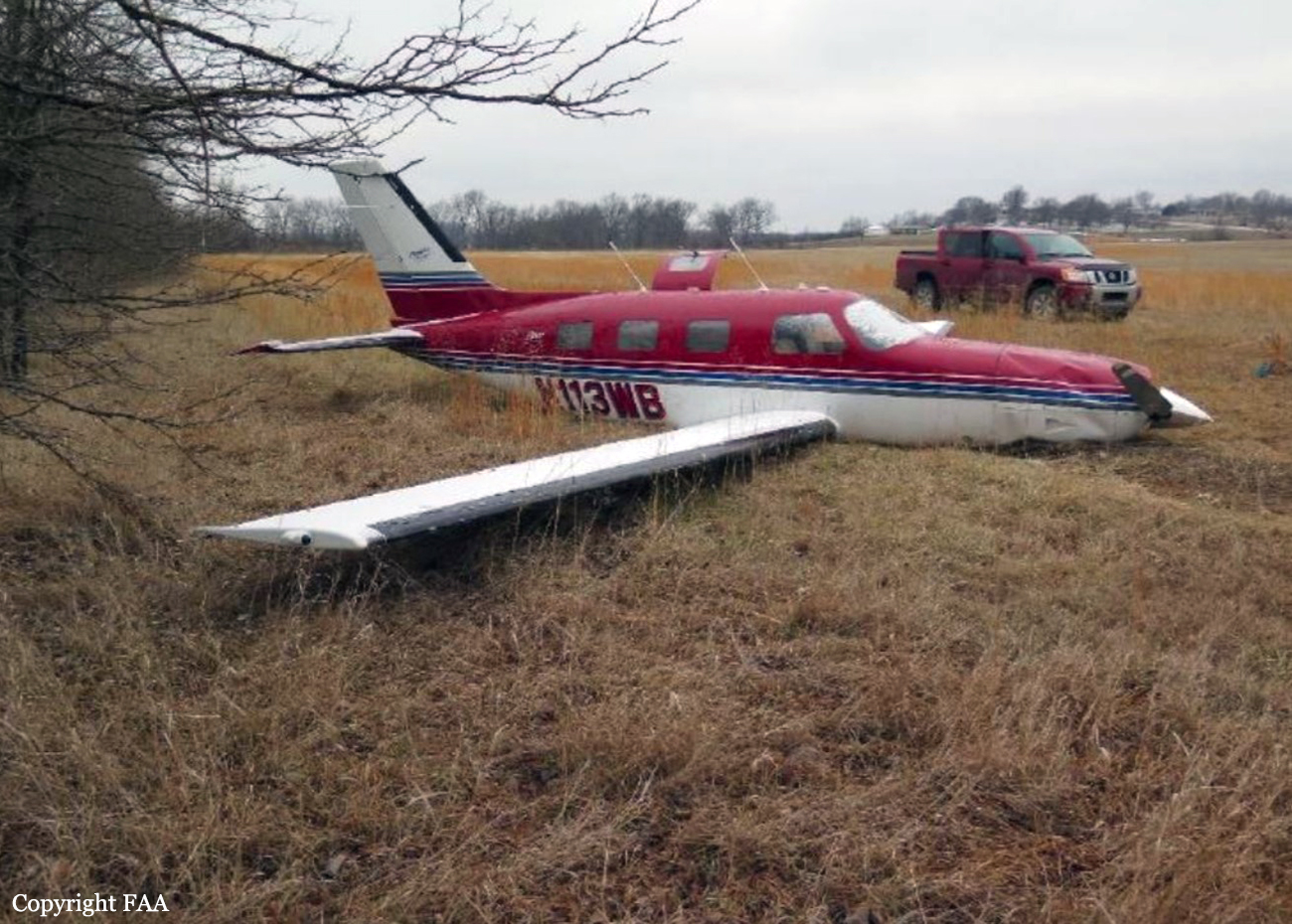
Crash of a Piper PA-46-500TP Malibu Meridian in Corinth
Date & Time:
Dec 24, 2015 at 0840 LT
Registration:
N891CR
Survivors:
Yes
Schedule:
Corinth - Key Largo
MSN:
46-97321
YOM:
2007
Crew on board:
1
Crew fatalities:
Pax on board:
3
Pax fatalities:
Other fatalities:
Total fatalities:
0
Captain / Total hours on type:
427.00
Aircraft flight hours:
1407
Circumstances:
On the day of the accident, a line service technician had disconnected the airplane from a battery charger. After disconnecting the battery, he left the right access door open which provided access to the fuel control unit, fuses, fuel line, oil line, and battery charging port as he always did. He then towed the airplane from the hangar it was stored in, and parked it in front of the airport's terminal building. The three passengers arrived first, and then about 30 minutes later the pilot arrived. He uploaded his navigational charts and did a preflight check "which was normal." The engine start, taxi, and engine run up, were also normal. The wing flaps were set to 10°. After liftoff he "retracted the landing gear" and continued to climb. Shortly thereafter the right cowl door opened partially, and started "flopping" up and down 3 to 4 inches in each direction. He reduced the torque to try to prevent the right cowl door from coming completely open. However, when he turned on the left crosswind leg to return to the runway, the right cowl door opened completely, and the airplane would not maintain altitude even with full power, so he "put the nose back down." The airplane struck trees, and then pancaked, and slid sideways and came to rest, in the front yard of an abandoned house. The private pilot and one passenger received minor injuries. Two passengers received serious injuries, one of whom was found out of her seat, unconscious, on the floor of the airplane shortly after the accident, and died about 227 days later. During the investigation, it could not be determined, if she had properly used the restraint system, as it was found unlatched with the seatbelt portion of the assembly extended. Examination of the wreckage revealed no evidence of any preimpact failures or malfunctions of the airplane or engine that would have precluded normal operation. It was discovered though, that the right access door had not been closed and latched by the pilot before takeoff, as examination of the right access door latches and clevis keepers found them to be functional, with no indication of overstress or deformation which would have been present if the access door had been forced open due to air loads in-flight, or during the impact sequence. Further examination also revealed that the battery charging port cover which was inside the compartment that the right access door allowed access to, had not been placed and secured over the battery charging port, indicating that the preflight inspection had not been properly completed. A checklist that was provided by a simulator training provider was found by the pilot's seat station. Examination of the checklist revealed that under the section titled: "EXTERIOR PREFLIGHT" only one item was listed which stated, "EXTERIOR PREFLIGHT…COMPLETE." It also stated on both sides of the checklist: "FOR SIMULATOR TRAINING PURPOSES ONLY." A copy of the airplane manufacturer's published pilot's operating handbook (POH) was found in a cabinet behind the pilot's seat where it was not accessible from the pilot's station. Review of the POH revealed that it contained detailed guidance regarding the preflight check of the airplane. Additionally, it was discovered that the landing gear was in the down and locked position which would have degraded the airplane's ability to accelerate and climb by producing excess drag, and indicated that the pilot had not retracted the landing gear as he thought he did, as the landing gear handle was still in the down position. Review of recorded data from the airplanes avionics system also indicated that the airplane had roughly followed the runway heading while climbing until it reached the end of the runway. The pilot had then entered a left turn and allowed the bank angle to increase to about 45°, and angle of attack to increase to about 8°, which caused the airspeed to decrease below the stalling speed (which would have been about 20% higher than normal due to the increased load factor from the steep turn) until the airplane entered an aerodynamic stall, indicating that the pilot allowed himself to become distracted by the open door, rather than maintaining control of the airplane. One of the seriously injured passenger passed away 227 days after the accident.
Probable cause:
The pilot's inadequate preflight inspection and his subsequent failure to maintain airplane control, which resulted in an access door opening after takeoff, and the airplane exceeding its critical angle of attack and experiencing an aerodynamic stall.
Final Report:

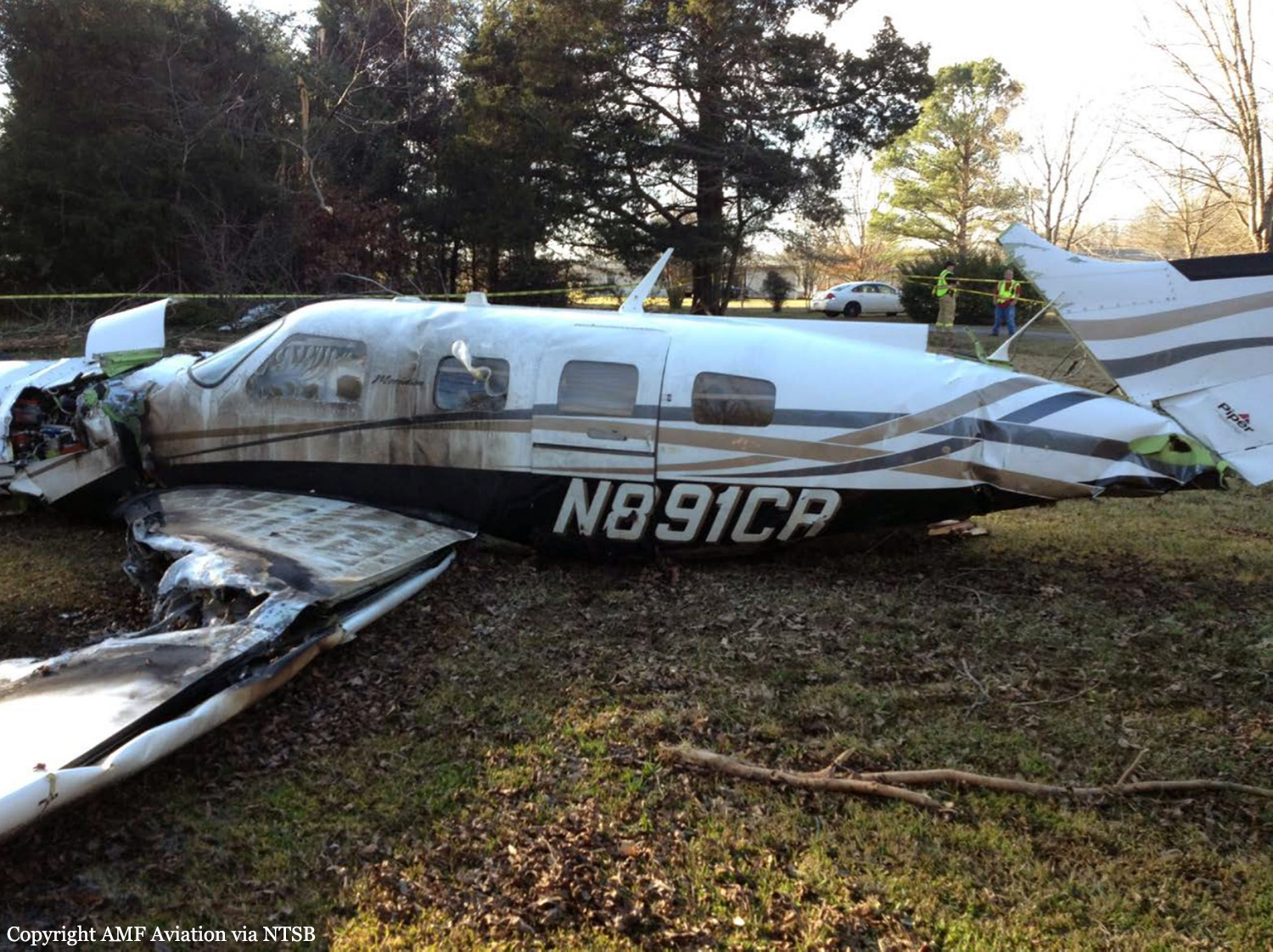
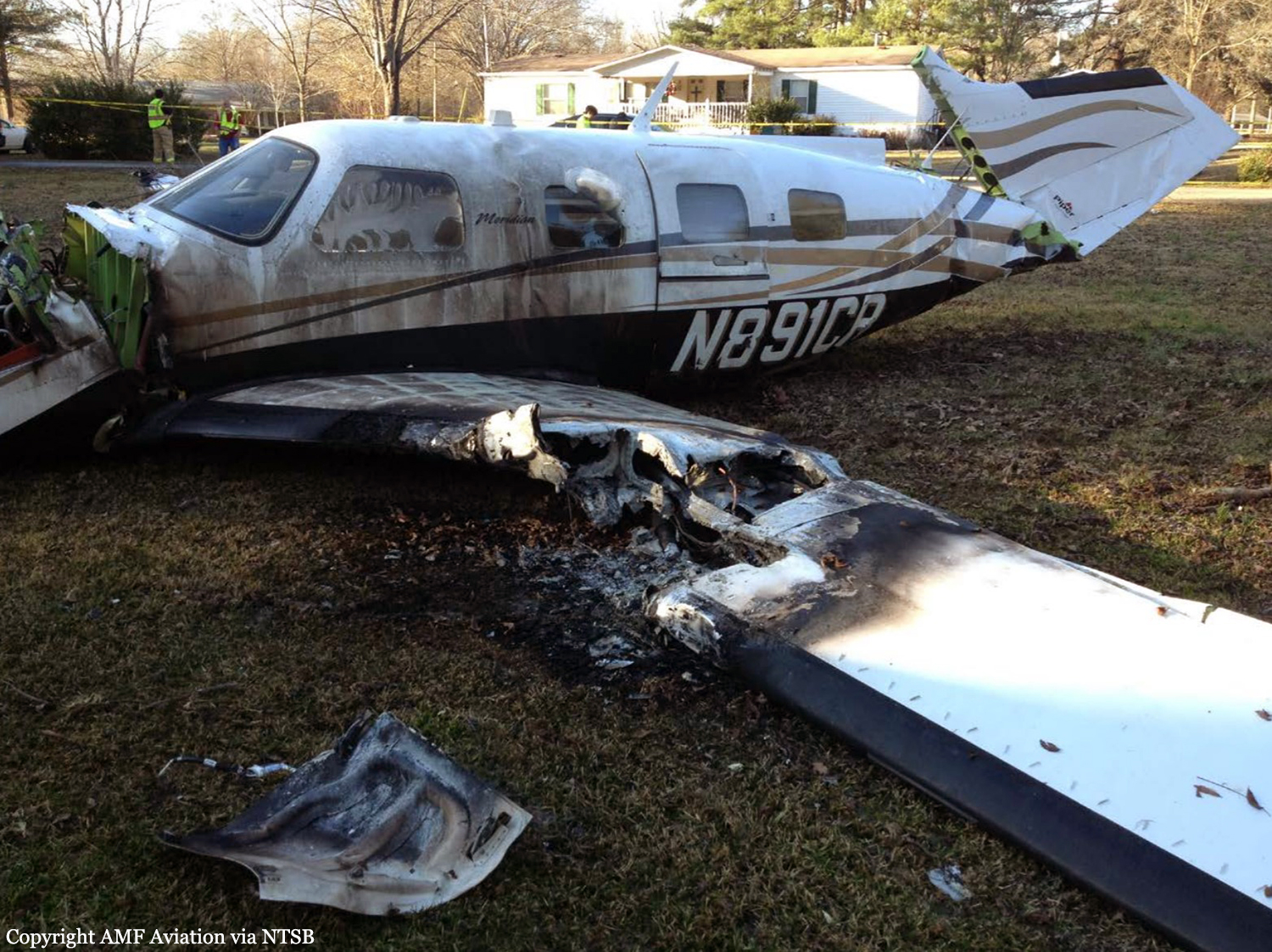
Crash of a Piper PA-46-500TP Meridian in Omaha: 1 killed
Date & Time:
Dec 10, 2015 at 1153 LT
Registration:
N145JR
Survivors:
No
Schedule:
Omaha - Trinidad
MSN:
46-97166
YOM:
2003
Crew on board:
1
Crew fatalities:
Pax on board:
0
Pax fatalities:
Other fatalities:
Total fatalities:
1
Captain / Total hours on type:
280.00
Aircraft flight hours:
1047
Circumstances:
The private pilot was conducting a personal cross-country flight. Shortly after takeoff, the pilot told the air traffic controller that he needed to return to the airport due to an attitude heading reference system (AHRS) "miscommunication." Air traffic control radar data indicated that, at that time, the airplane was about 1.75 miles north of the airport on a southeasterly course about 2,000 ft. mean sea level. About 20 seconds after the pilot requested to return to the airport, the airplane began to descend. The airplane subsequently entered a right turn, which appeared to continue until the final radar data point. The airplane struck power lines about 3/4 of a mile from the airport while maneuvering within the traffic pattern. The power lines were about 75 ft. above ground level. A postaccident examination of the airframe and engine revealed no preimpact mechanical malfunctions or failures that would have precluded normal operation. Although the pilot reported a flight instrumentation issue to air traffic control, the investigation was unable to confirm whether such an anomaly occurred based on component testing and available information. Examination of the standby airspeed indicator revealed that the link arm had separated from the pin on the rocking shaft assembly; however, it likely separated during the accident sequence. No other anomalies were observed. Functional testing indicated that the standby airspeed indicator was likely functional and providing accurate airspeed information to the pilot throughout the flight. Finally, examination of the left and right annunciator panel bulb filaments associated with the left fuel pump advisory revealed that they were stretched, indicating that the left fuel pump advisory indication annunciated at the time of the accident; however, this likely occurred during the accident sequence as a result of an automatic attempt to activate the left fuel pump due to the loss of fuel pressure immediately after the left wing separated. Toxicology testing of the pilot detected low levels of three different sedating antihistamines; however, antemortem levels could not be determined nor could the underlying reason(s) for the pilot's use of these medications. As a result, it could not be determined whether pilot impairment occurred due to the use of the medications or the underlying condition(s) themselves. Although the pilot reported a flight instrumentation issue, this problem would not have affected his ability to control the airplane. Further, the pilot should have been able to see the power lines given the day/visual weather conditions. It is possible that the pilot become distracted by the noncritical anomaly, which resulted in his failure to maintain clearance from the power lines.
Probable cause:
The pilot's failure to maintain clearance from power lines while returning to the airport after becoming distracted by a noncritical flight instrumentation anomaly indication.
Final Report:
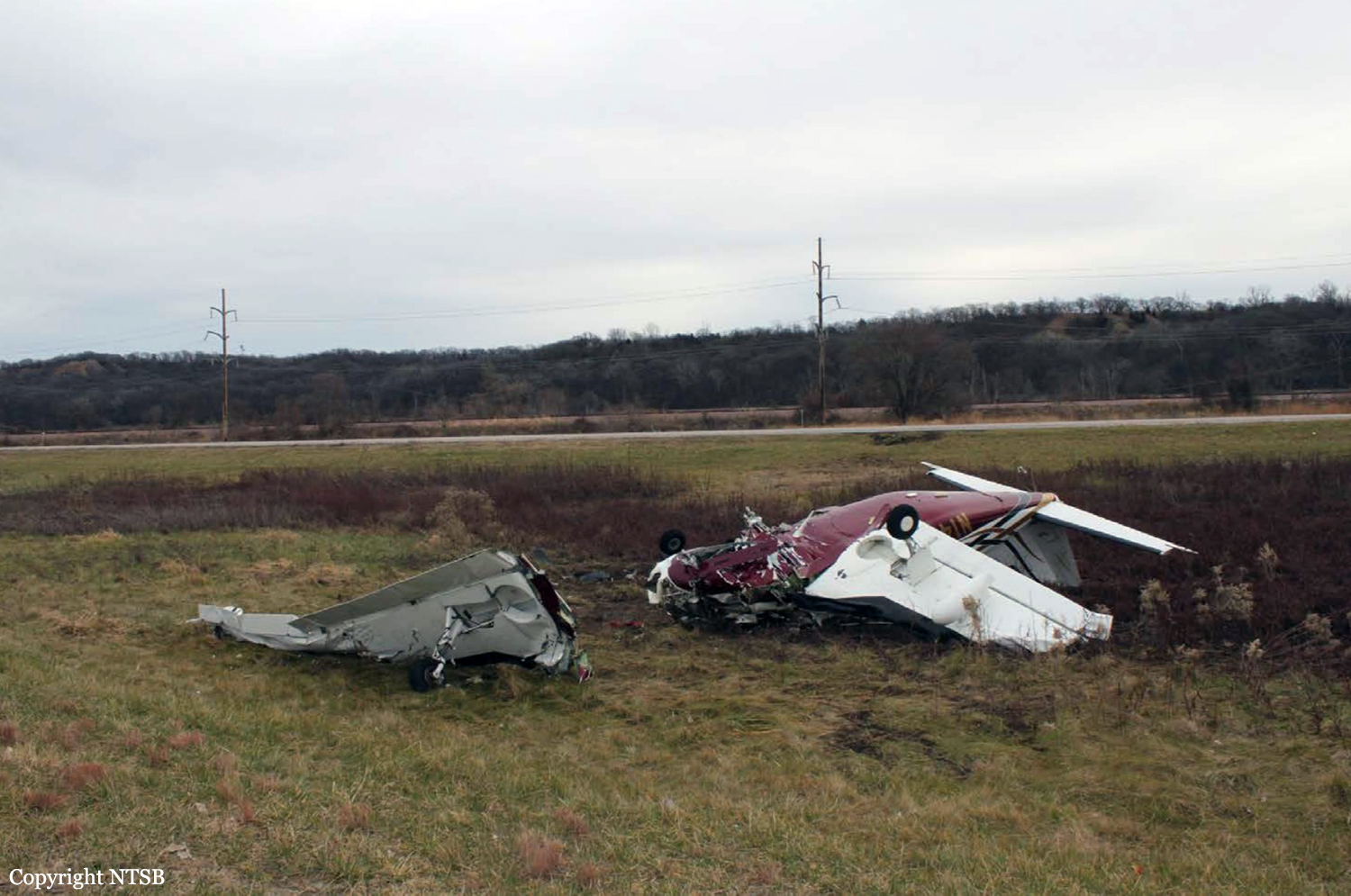
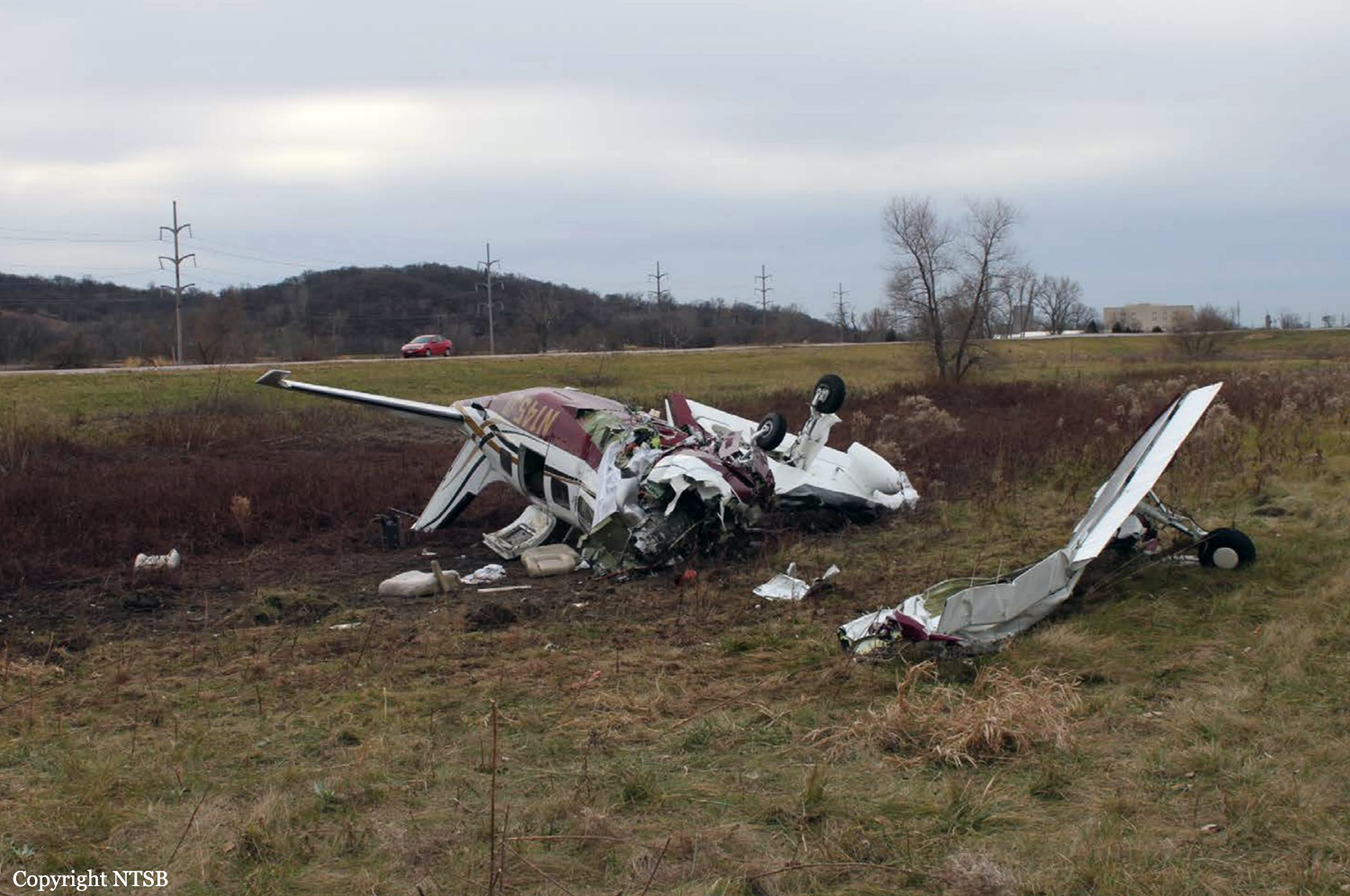

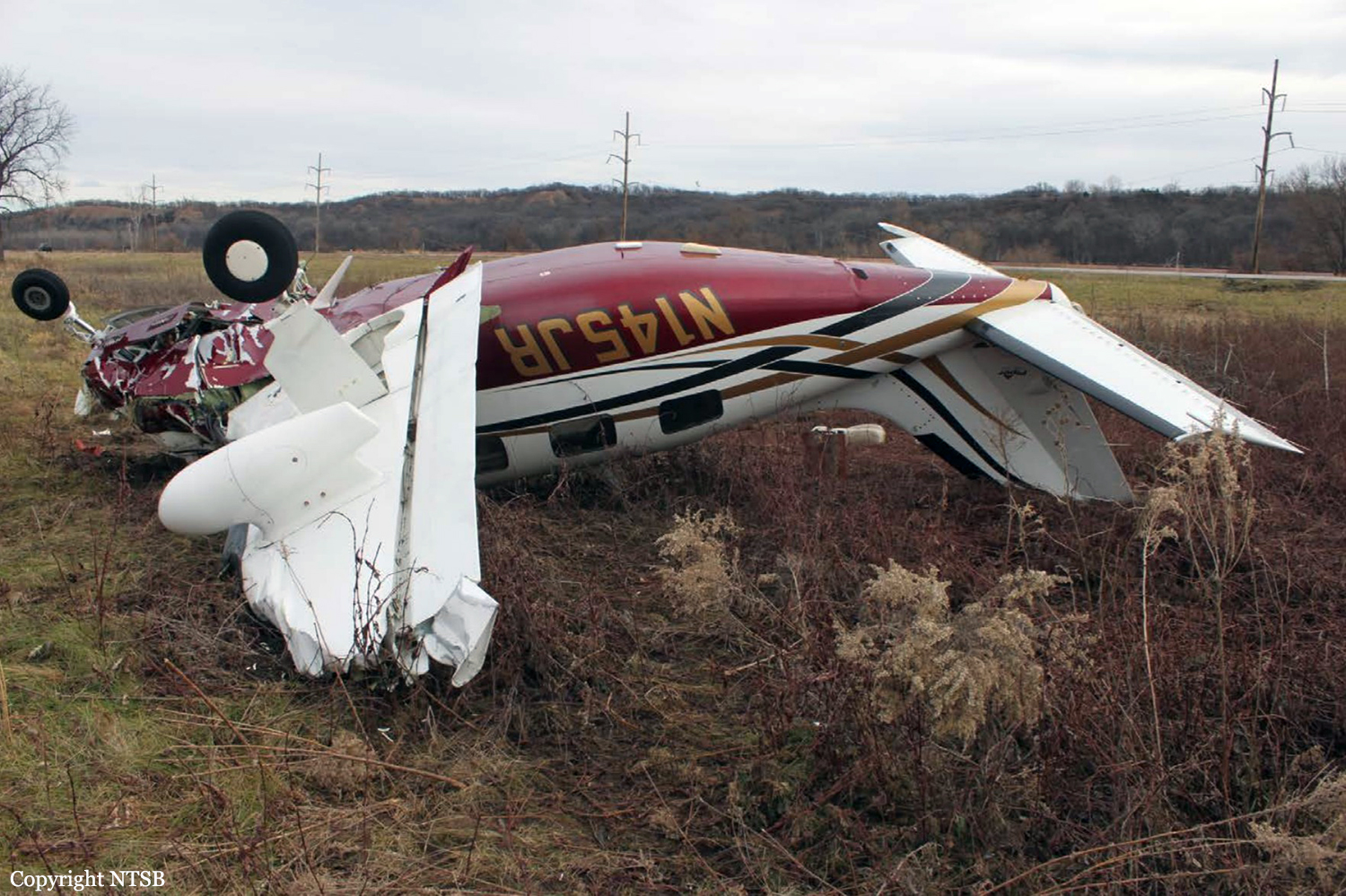
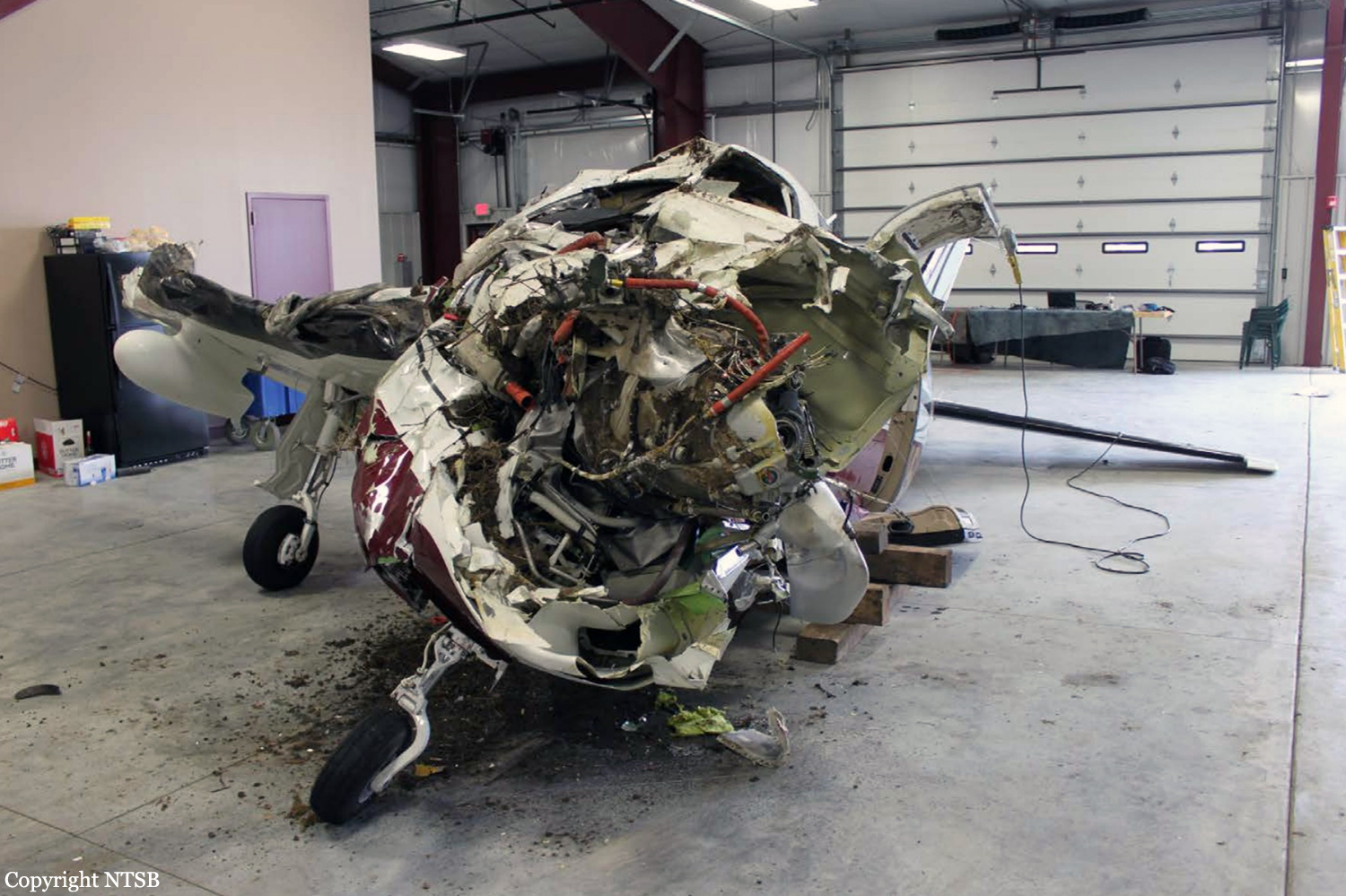


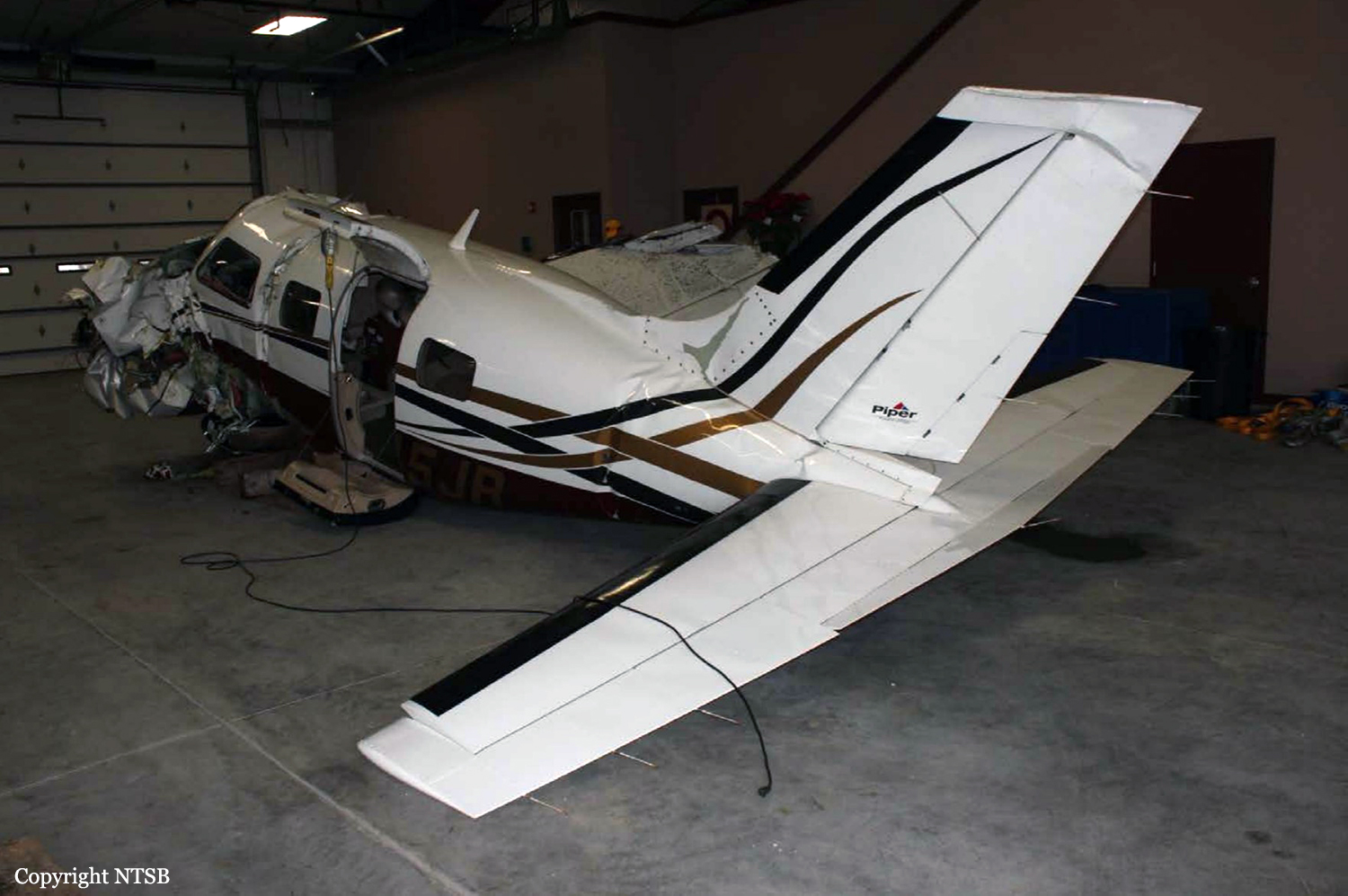
Crash of a Piper PA-46-350P Malibu Mirage in Mammoth Lakes
Date & Time:
Dec 3, 2015 at 1220 LT
Registration:
N546C
Survivors:
Yes
Schedule:
Mammoth Lakes - Mammoth Lakes
MSN:
46-36626
YOM:
2014
Crew on board:
1
Crew fatalities:
Pax on board:
1
Pax fatalities:
Other fatalities:
Total fatalities:
0
Captain / Total hours on type:
2000.00
Aircraft flight hours:
230
Circumstances:
According to the pilot, he checked the winds via his onboard weather reporting device during the run-up, and he stated that the 25 knot wind sock was about ¾ full just moments before the takeoff roll. He reported that during the takeoff roll the airplane encountered a significant wind gust from the right. He stated that the wind gust forced the airplane to exit the left side of the runway, the landing gear collapsed, and the airplane collided with metal pylons which surrounded the wind sock. The airplane sustained substantial damage to both wings, fuselage, horizontal stabilizer and elevator. The pilot reported that there were no mechanical failures or anomalies prior to or during the flight that would have prevented normal flight operation. According to the Airport/Facility Directory, the Airport Remarks state: Airport located in mountainous terrain with occasional strong winds and turbulence. Lighted windsock available at runway ends and centerfield. With southerly crosswinds in excess of 15 knots, experiencing turbulence and possible windshear along first 3000´ of Runway 27. The reported wind at the airport during the time of the accident was from 200 degrees true at 22 knots, with gusts at 33 knots, and the departure runway heading was 27. According to the pilot operating hand book the maximum demonstrated crosswind component for this airplane is 17 knots. The crosswind component during the time of the accident was 26 knots.
Probable cause:
The pilot's decision to takeoff in high crosswind conditions resulting in the inability to maintain an adequate crosswind correction, consequently failing to maintain directional control and departing the runway, and subsequently colliding with fixed airfield equipment.
Final Report:
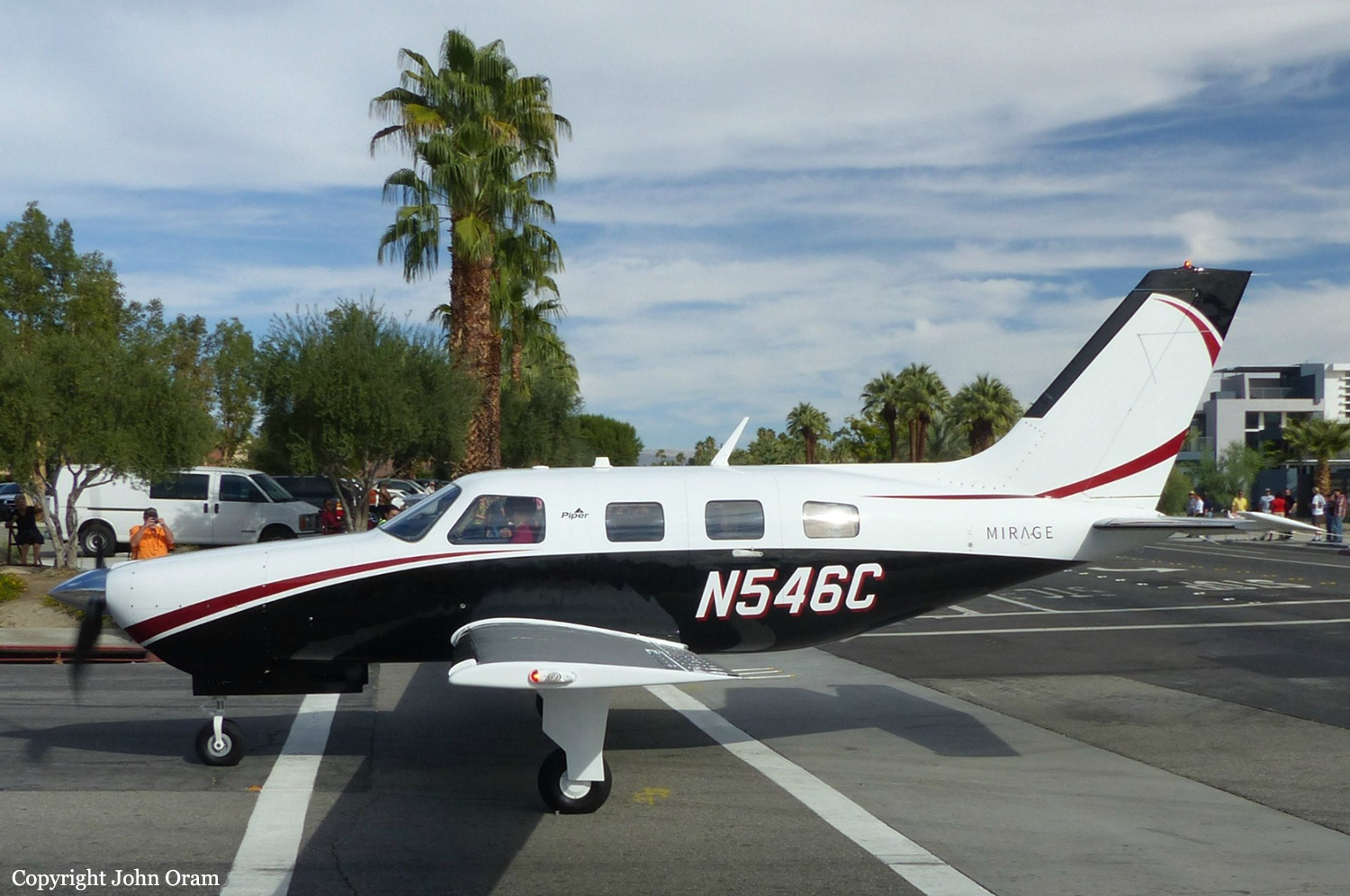

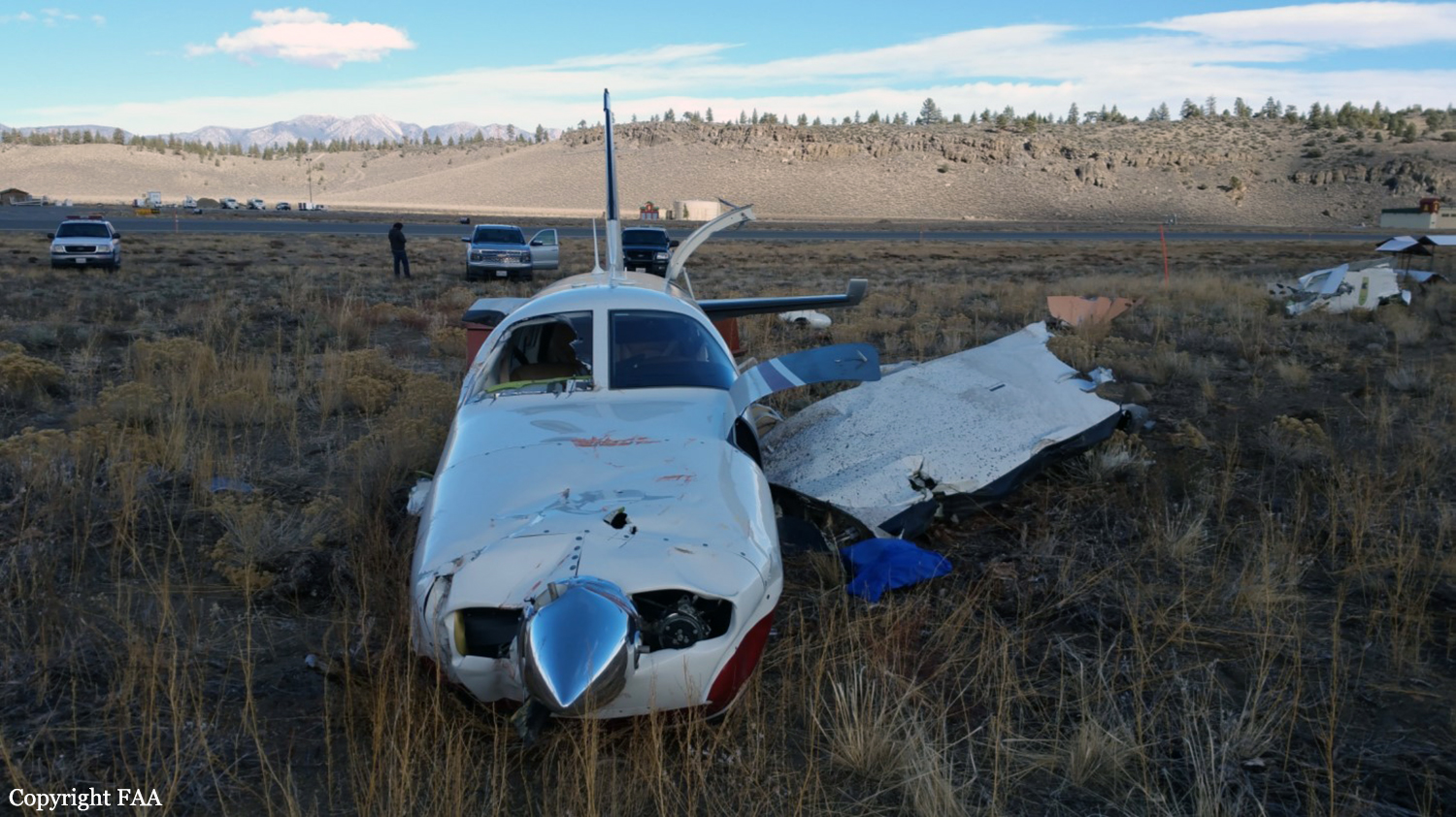
Crash of a Piper PA-46-350P Malibu Mirage in Buttles Farm: 4 killed
Date & Time:
Nov 14, 2015 at 1134 LT
Registration:
N186CB
Survivors:
No
Schedule:
Fairoaks – Dunkeswell
MSN:
46-22085
YOM:
1989
Crew on board:
1
Crew fatalities:
Pax on board:
3
Pax fatalities:
Other fatalities:
Total fatalities:
4
Captain / Total hours on type:
260.00
Circumstances:
The aircraft was approaching Dunkeswell Airfield, Devon after an uneventful flight from Fairoaks, Surrey. The weather at Dunkeswell was overcast, with rain. The pilot held an IMC rating but there is no published instrument approach procedure at Dunkeswell. As the aircraft turned onto the final approach, it commenced a descent on what appeared to be a normal approach path but then climbed rapidly, probably entering cloud. The aircraft then seems to have stalled, turned left and descended to “just below the clouds”, before it climbed steeply again and “disappeared into cloud”. Shortly after, the aircraft was observed descending out of the cloud in a steep nose-down attitude, in what appears to have been a spin, before striking the ground. All four occupants were fatally injured.
Probable cause:
Whilst positioning for an approach to Dunkeswell Airfield, the aircraft suddenly pitched nose-up and entered cloud. This rapid change in attitude would have been disorientating for the pilot, especially in IMC, and, whilst the aircraft was probably still controllable, recovery from this unusual attitude may have been beyond his capabilities. The aircraft appears to have stalled, turned left and descended steeply out of cloud, before climbing rapidly back into cloud. It probably then stalled again and entered a spin from which it did not recover. All four occupants were fatally injured when the aircraft struck the ground. The investigation was unable to determine with certainty the reason for the initial rapid climb. However, it was considered possible that the pilot had initiated the preceding descent by overriding the autopilot. This would have caused the autopilot to trim nose-up, increasing the force against the pilot’s manual input. Such an out-of-trim condition combined with entry into cloud could have contributed to an unintentional and disorientating pitch-up manoeuvre.
Final Report:
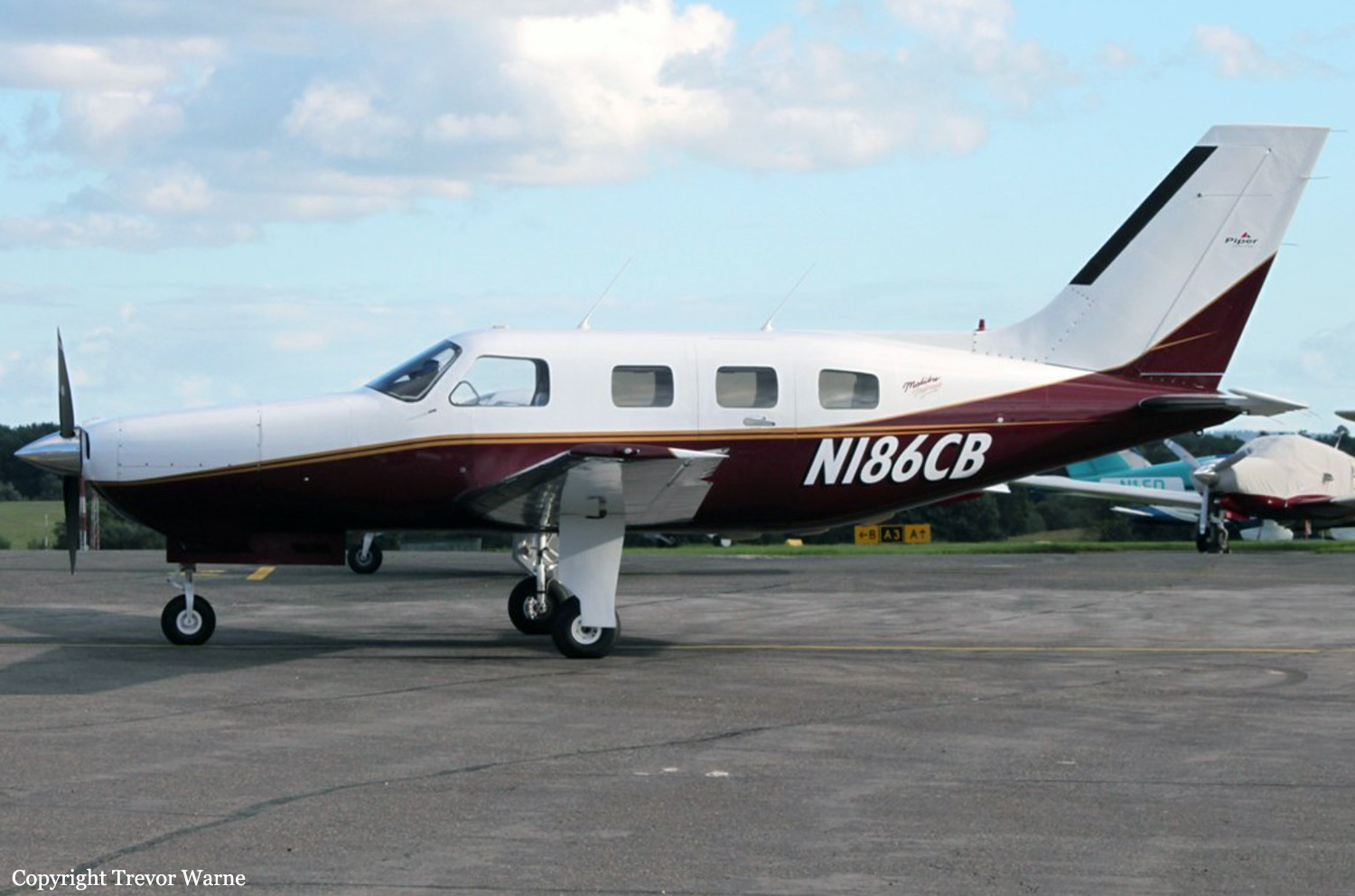

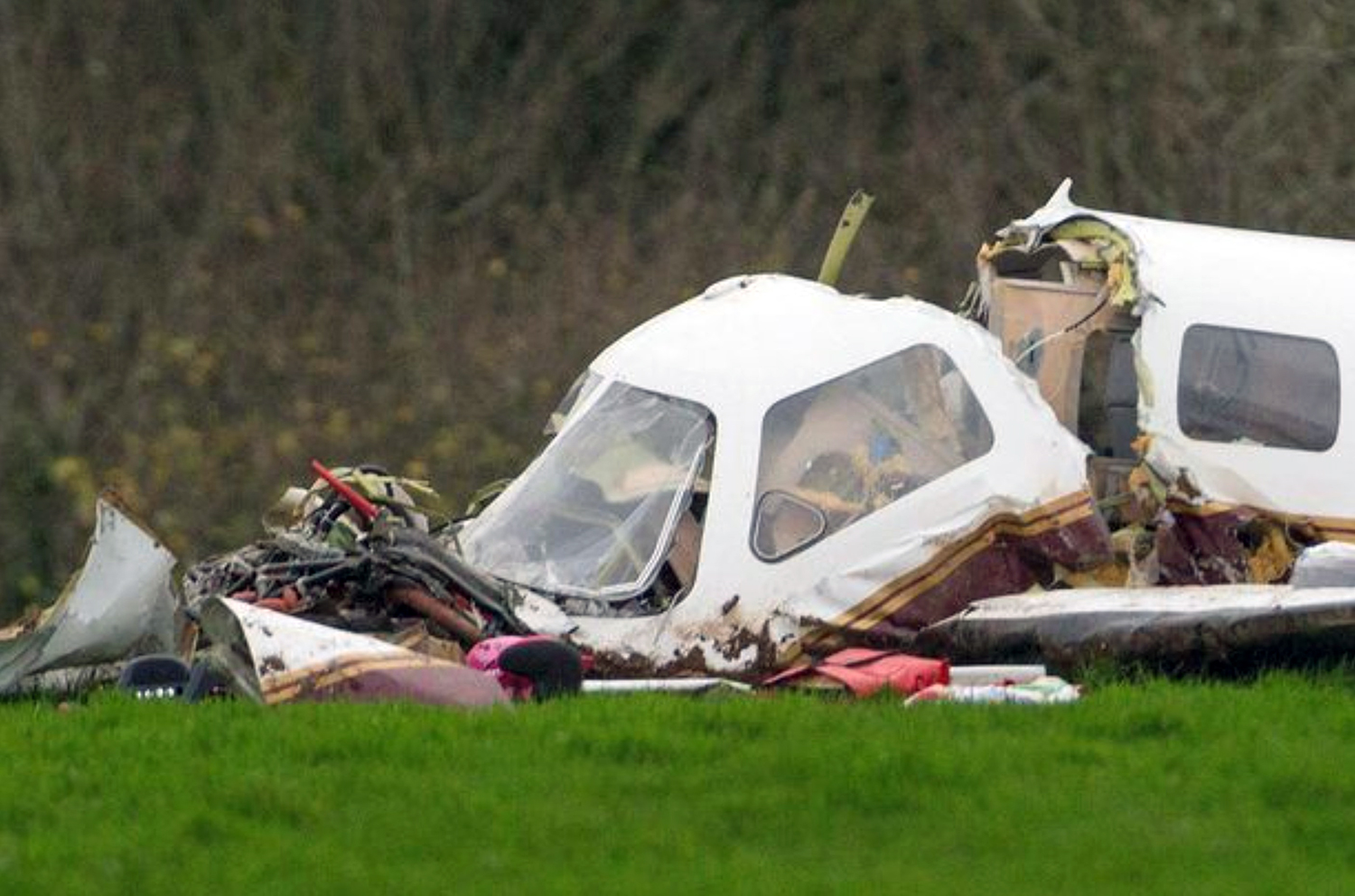
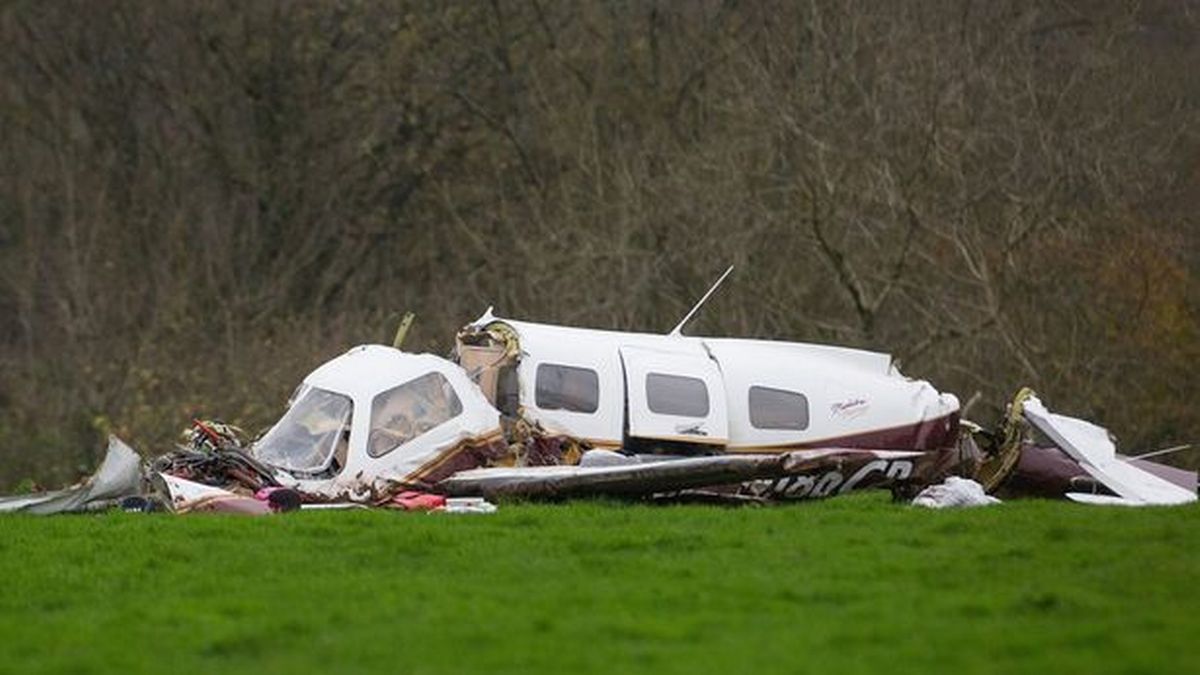
Crash of a Piper PA-46-350P Malibu Mirage off Cannes
Date & Time:
Aug 31, 2015 at 0855 LT
Registration:
D-ESPE
Survivors:
Yes
Schedule:
Cannes – Triengen
MSN:
46-22063
YOM:
1989
Crew on board:
1
Crew fatalities:
Pax on board:
1
Pax fatalities:
Other fatalities:
Total fatalities:
0
Captain / Total hours on type:
900.00
Circumstances:
The single engine aircraft departed Cannes-Mandelieu Airport on a private flight to Triengen, Switzerland, with one passenger and one pilot on board. Shortly after takeoff from runway 17, while in initial climb, the pilot noticed engine troubles and the speed dropped. He was able to maintain a straight-in path and eventually ditched the airplane few hundred metres offshore. Both occupants were slightly injured and the aircraft sank and was lost.
Probable cause:
The engine failure was the result of an incorrect refueling, due to an intake initial order probably incorrect that the incomplete application of procedures by the operator in charge of refueling and the lack of attention of the pilot did not allow recovery. The quantity of 100LL present in the feeders and the pipes allowed the taxiing and the take-off run, without the pilot noticing any anomaly. Once this quantity of 100LL consumed, the JET A1 present in the lower part of the tanks fed the engine and caused the power decrease.
Contributed to the accident:
- Coordination between the aerodrome operator and its subcontractors during the fuel order taken by the ramp agent, who does not encourage the operator in charge of refueling to confirm the type of fuel in a service carried out under strong time constraints,
- A usual practice for refueling certain types of helicopters, whose reservoir ports are not compatible with the dimensions of the standard refueling nozzles, which trivialize the change of nozzle for the refueling of JET A1, occasionally leading to the filling of order confirmation vouchers, thus reducing the effectiveness of the manifest safety for the operator through the presence of keying devices specific to each fuel,
- The ineffectiveness of the fuel type check item of the pre-flight procedure.
Contributed to the accident:
- Coordination between the aerodrome operator and its subcontractors during the fuel order taken by the ramp agent, who does not encourage the operator in charge of refueling to confirm the type of fuel in a service carried out under strong time constraints,
- A usual practice for refueling certain types of helicopters, whose reservoir ports are not compatible with the dimensions of the standard refueling nozzles, which trivialize the change of nozzle for the refueling of JET A1, occasionally leading to the filling of order confirmation vouchers, thus reducing the effectiveness of the manifest safety for the operator through the presence of keying devices specific to each fuel,
- The ineffectiveness of the fuel type check item of the pre-flight procedure.
Final Report:
Crash of a Piper PA-46-500TP Malibu Meridian in Saranac Lake: 4 killed
Date & Time:
Aug 7, 2015 at 1750 LT
Registration:
N819TB
Survivors:
No
Schedule:
Saranac Lake – Rochester
MSN:
46-97117
YOM:
2001
Crew on board:
1
Crew fatalities:
Pax on board:
3
Pax fatalities:
Other fatalities:
Total fatalities:
4
Captain / Total hours on type:
230.00
Circumstances:
The private pilot, who was experienced flying the accident airplane, was conducting a personal flight with three passengers on board the single-engine turboprop airplane. Earlier that day, the pilot flew uneventfully from his home airport to an airport about 1 hour away. During takeoff for the return flight, the airplane impacted wooded terrain about 0.5 mile northwest of the departure end of the runway. There were no witnesses to the accident, but the pilot's radio communications with flight service and on the common traffic advisory frequency were routine, and no distress calls were received. A postcrash fire consumed a majority of the wreckage, but no preimpact mechanical malfunctions were observed in the remaining wreckage. Examination of the propeller revealed that the propeller reversing lever guide pin had been installed backward. Without the guide pin installed correctly, the reversing lever and carbon block could dislodge from the beta ring and result in the propeller blades traveling to an uncommanded feathered position. However, examination of the propeller components indicated that the carbon block was in place and that the propeller was in the normal operating range at the time of impact. Additionally, the airplane had been operated for about 9 months and 100 flight hours since the most recent annual inspection had been completed, which was the last time the propeller was removed from and reinstalled on the engine. Therefore, the improper installation of the propeller reversing lever guide pin likely did not cause the accident. Review of the pilot's autopsy report revealed that he had severe coronary artery disease with 70 to 80 percent stenosis of the right coronary artery, 80 percent stenosis of the left anterior descending artery, and mitral annular calcification. The severe coronary artery disease combined with the mitral annular calcification placed the pilot at high risk for an acute cardiac event such as angina, a heart attack, or an arrhythmia. Such an event would have caused sudden symptoms such as chest pain, shortness of breath, palpitations, or fainting/loss of consciousness and would not have left any specific evidence to be found during the autopsy. It is likely that the pilot was acutely impaired or incapacitated at the time of the accident due to an acute cardiac event, which resulted in his loss of airplane control.
Probable cause:
The pilot's loss of airplane control during takeoff, which resulted from his impairment or incapacitation due to an acute cardiac event.
Final Report:
